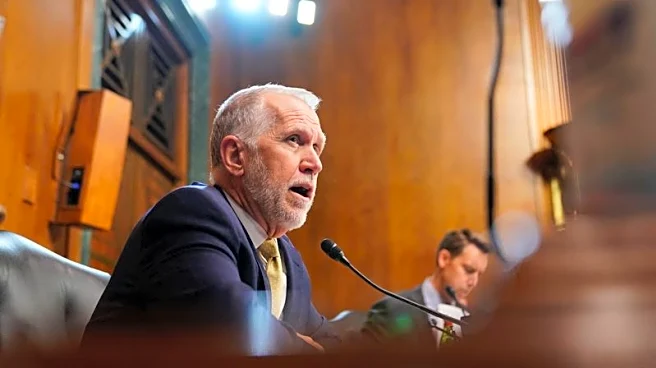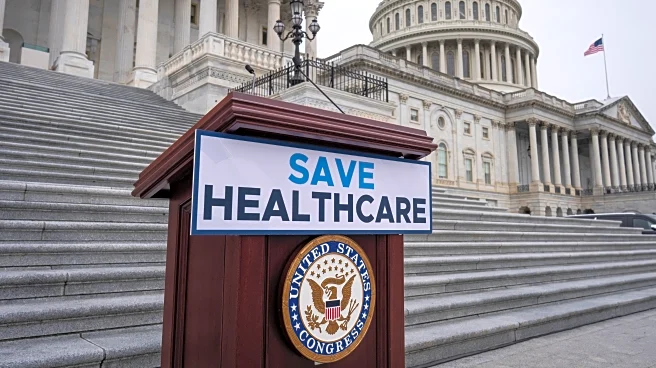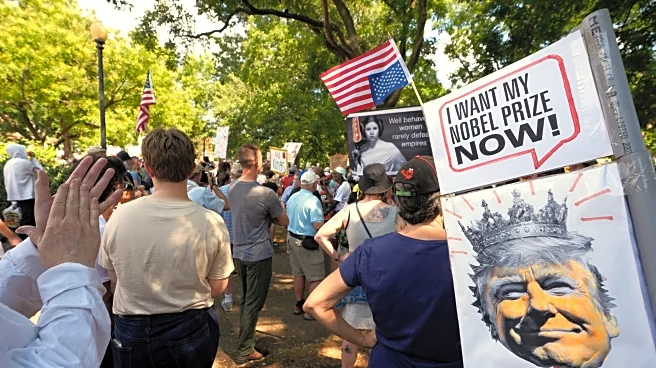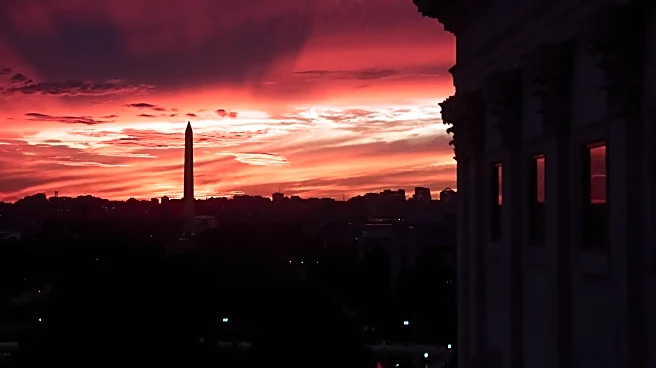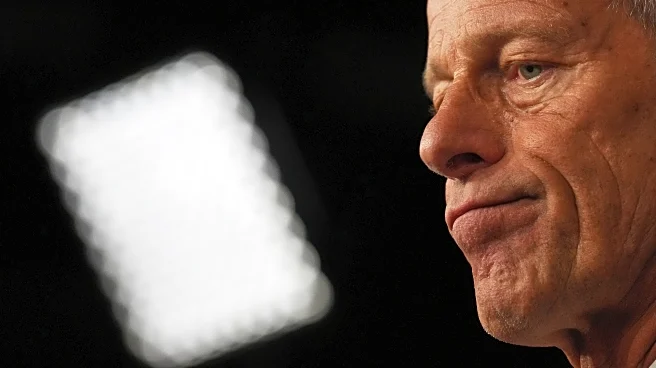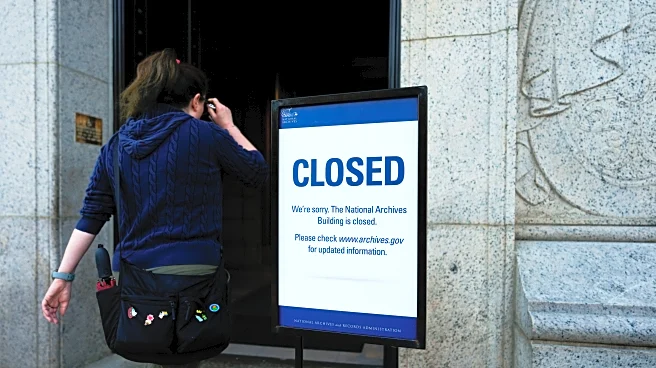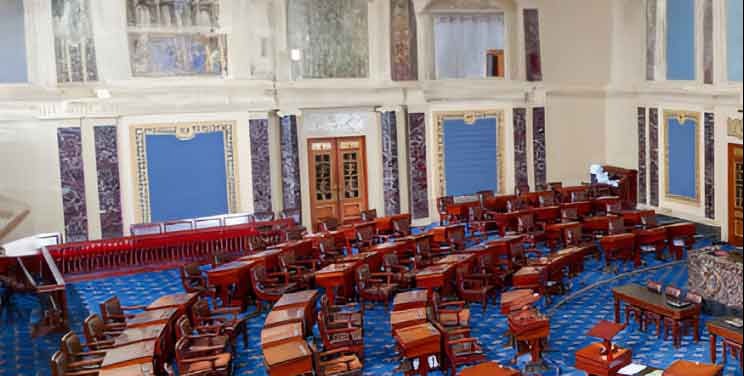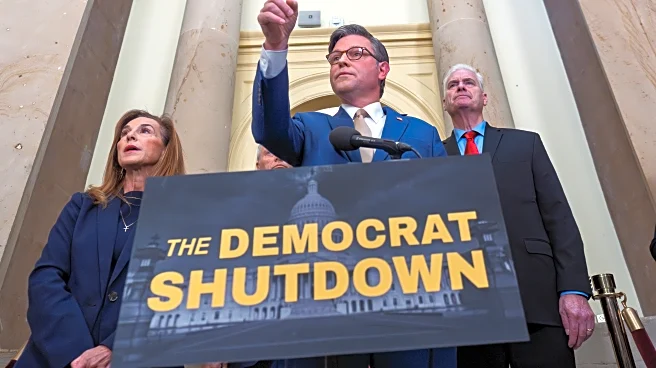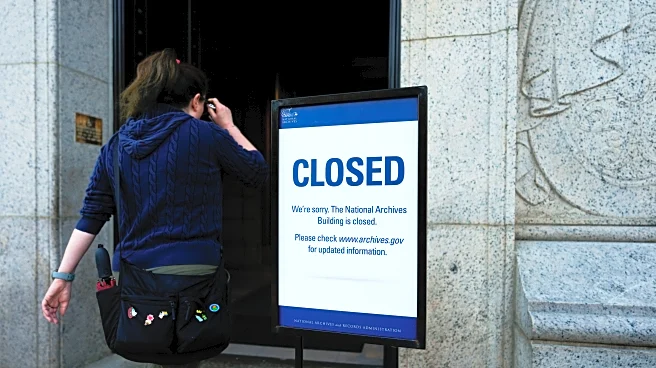What's Happening?
The U.S. federal government remains in a shutdown as lawmakers have left Washington without reaching an agreement on a funding bill. The deadlock is primarily due to disagreements over enhanced Obamacare subsidies. Democrats are pushing for these subsidies to be included in any stopgap funding measure, arguing that failure to do so could lead to a 75% increase in premiums, according to the nonpartisan health policy research group KFF. Republicans, however, believe the issue should be addressed later in the year. The Senate recently failed to advance both GOP and Democratic short-term funding bills, exacerbating the situation. Meanwhile, Speaker Mike Johnson has announced that the House will not reconvene next week, further delaying any potential resolution.
Why It's Important?
The ongoing government shutdown has significant implications for federal employees and the general public. Many federal workers, most of whom are based outside Washington, D.C., face uncertainty regarding their paychecks. This has led to increased demand at food banks as furloughed workers seek assistance. Additionally, the shutdown affects public access to national parks and museums, forcing Americans to alter their plans. Politically, the shutdown has sparked a blame game between Democrats and Republicans, with each side accusing the other of using the situation for political gain. President Trump has embraced the political battle, but there are concerns among his allies about the potential political fallout.
What's Next?
If the government shutdown continues past October 11, the Smithsonian museums, research centers, and the National Zoo will close to the public. The ongoing impasse suggests that federal employees and the public may face prolonged disruptions. Political leaders will need to negotiate a compromise to resolve the funding issue and address the enhanced Obamacare subsidies. The situation remains fluid, with potential for further political maneuvering and public pressure to influence the outcome.

